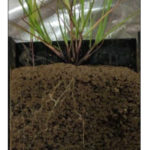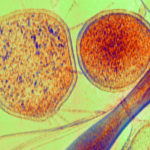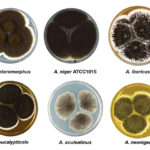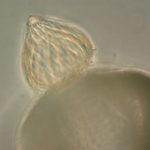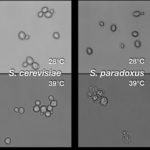Two Department of Energy user facilities, the Environmental Molecular Sciences Laboratory (EMSL) and the Joint Genome Institute (JGI), have selected 12 of the 41 proposals received from a joint call for 2019 research under the Facilities Integrating Collaborations for User Science (FICUS) initiative. This was the sixth FICUS call between EMSL and JGI since the collaborative science initiative was formed in 2014 by the Office of Biological and Environmental Research (BER) to harness the combined expertise and resources of two of the national user facilities stewarded by the DOE Office of Science in support of DOE’s energy, environment, and basic research missions. The accepted proposals began on October 1, 2018. Click to read more on the JGI website.
Scientists Mining JGI’s Metagenomes Find Miniature Molecular Scissors
By mining JGI’s massive database of microbial genomes and metagenomes, a team led by researchers at UC Berkeley and Berkeley Lab has identified a new family of CRISPR-associated (Cas) enzymes found in an ancient branch of the microbial tree of life. Just one-third the size of the seminal Cas9 protein – the business end of the gene-editing tool CRISPR-Cas9 – the new enzymes, dubbed Cas14, are the smallest functional CRISPR system discovered to date. Owing to its compact size and single-stranded DNA cutting activity, Cas14 may improve rapid CRISPR-based diagnostic systems now under development for infectious diseases, genetic mutations, and cancer.
JGI Builds Genetic Profile of Aspergillus section Nigri
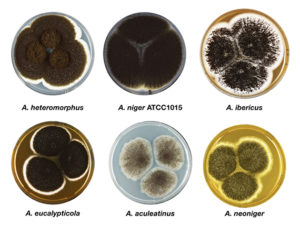 In Nature Genetics, a team led by scientists at the Technical University of Denmark, the JGI, and JBEI present the first large analysis of an Aspergillus fungal subgroup, section Nigri. The results are part of a long-term project to sequence, annotate and analyze the genomes of more than 300 Aspergillus fungi.
In Nature Genetics, a team led by scientists at the Technical University of Denmark, the JGI, and JBEI present the first large analysis of an Aspergillus fungal subgroup, section Nigri. The results are part of a long-term project to sequence, annotate and analyze the genomes of more than 300 Aspergillus fungi.
In choosing to focus on section Nigri, the researchers recognized the myriad of industrial applications for the fungi within this subgroup. They serve as production organisms for 49 of 260 industrial enzymes and are also very efficient producers of enzymes and secondary metabolites. JGI Fungal Program head Igor Grigoriev said that one of the aims in sequencing the genomes within the Aspergillus genus is to increase the catalog of carbohydrate active enzymes (CAzymes), which can degrade plant cell walls and thus have applications in the DOE mission to develop industrial processes for producing sustainable alternative fuels using candidate bioenergy feedstock crops. Click to read more on the JGI website.
JGI Develops Single-Cell Pipeline for Fungal Diversity
More than a million species of fungi are estimated to live on this planet, but most of that diversity remains unknown because the fungi have avoided detection and have not been cultured for study in laboratories. A team led by researchers at the Joint Genome Institute has developed a pipeline to generate genomes from single cells of uncultivated fungi. The approach was tested on several uncultivated fungal species representing the earliest evolutionary branches in the fungal genealogy that provide a repertoire of important and valuable gene products.
JGI Helps Develop RH-Seq in Yeast Study
There are more than 1,000 species of yeasts and they vary in terms of genetics, metabolism and biochemistry. Their capabilities can be harnessed for a wide range of biotechnological applications, including biofuel production. Efforts such as the 1000 Fungal Genomics Project led by the JGI aim to improve our understanding of fungal diversity by sequencing genomes from across the fungal Tree of Life, but they also highlight the corresponding need to be able to assign functions to unknown genes and improve functional annotation to harness the genomic data.
In Nature Genetics, a team led by researchers at the University of California, Berkeley and the Buck Institute for Research on Aging and including JGI researchers has demonstrated a way to map associations between genotype and phenotype using a strategy called reciprocal hemizygosity analysis via sequencing (RH-Seq). The proof-of-concept study represents a first-ever case of complex genotype-to-phenotype mapping between species that have been separated for millions of years and paves the way for dissection of additional traits, in fungi and beyond. Learn more on the JGI website.
- « Previous Page
- 1
- …
- 26
- 27
- 28
- 29
- 30
- …
- 46
- Next Page »
Was this page useful?


